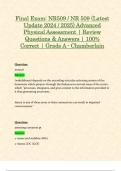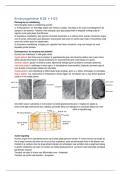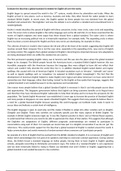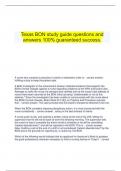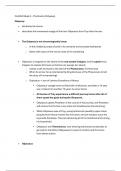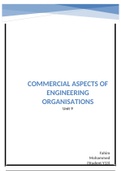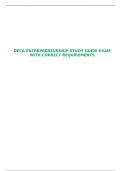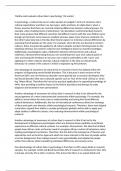Final Exam: NR509 / NR 509 (Latest
Update ) Advanced
Physical Assessment | Review
Questions & Answers | 100%
Correct | Grade A - Chamberlain
Question:
arousal
Answer:
(wakefulness) depends on the ascending reticular activating system of the
brainstem which projects through the thalamus to several areas of the cortex,
which "processes, integrates, and gives context to the information provided to
it thus generating awareness.
Injury to any of these areas or their connections can result in impaired
consciousness."
Question:
assessing comatose pt
Answer:
1- assess and stabilize ABCs
2-Assess LOC (GCS)
,3- neuro exam
4-get info from relatives, friends, witnesses to establish the speed of onset and
duration of unconsciousness, any warning symptoms, precipitating factors, or
previous episodes, and the premorbid appearance and behavior of the
patient. Any history of past medical and mental disorders is also important
Question:
The 2 DON'Ts of assessing comatose patients
Answer:
~Don't dilate the pupils, which serve as an important clue to the underlying
cause of coma (structural vs. metabolic) and may warn of life-threatening
cerebral herniation syndromes.
~Don't flex the neck if there is any question of trauma to the head or neck.
Immobilize the cervical spine and obtain imaging first to rule out fractures of
the cervical vertebrae that could compress and damage the spinal cord.
Question:
Alertness
Answer:
Speak to the patient in a normal tone of voice.
The alert patient opens the eyes, looks at you, and responds fully and
appropriately to stimuli (arousal intact).
,Question:
Lethargy
Answer:
Speak to the patient in a loud voice. For example, call the patient's name or
ask, "How are you?"
The lethargic patient appears drowsy but opens the eyes and looks at you,
responds to questions, and then falls asleep.
Question:
Obtundation
Answer:
Apply tactile stimulus by gently shaking the patient as if awakening a sleeper.
The obtunded patient opens the eyes and looks at you but responds to you
slowly and is somewhat confused. Alertness and interest in the environment
are decreased.
Question:
Stupor
Answer:
Apply a painful stimulus. For example, pinch a tendon, rub the sternum, or
roll a pencil across a nail bed. (No stronger stimuli needed!)
, The stuporous patient arouses from sleep only after painful stimuli. Verbal
responses are slow or even absent. The patient lapses into an unresponsive
state when the stimulus ceases. There is minimal awareness of self or the
environment.
Question:
Coma
Answer:
Apply repeated painful stimuli to the trunk and extremities.
A comatose patient remains unarousable with eyes closed. There is no evident
response to inner need or external stimuli.
a state of impaired arousal and awareness, signals a potentially life-
threatening event affecting the two hemispheres, the brainstem, or both
Question:
In a comatose patient with absent doll's eye movements, the eyes ...
Answer:
continue to look straight ahead, with no movement relative to head position.
This is suspicious for a lesion of the midbrain or pons

